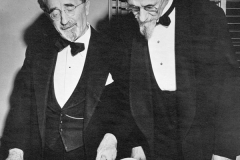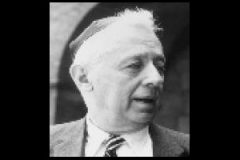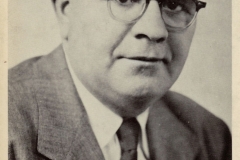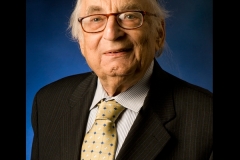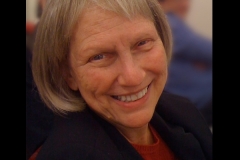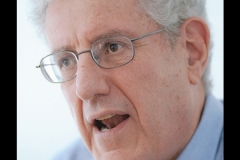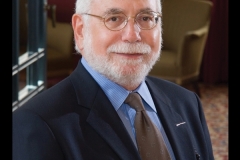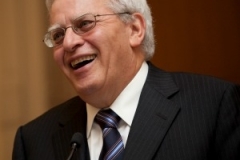100 Years of Supporting Jewish Scholarship
On June 15, 1920, a small group of American scholars in Judaic studies met in New York City to found the American Academy for Jewish Research (AAJR). At the time, the United States was not a dynamic center of Judaica research and the teaching of Jewish studies was not a part of the liberal arts curriculum in North American universities. The majority of the founders and all of the initial officers held teaching positions at Jewish educational institutions, primarily the Jewish Theological Seminary and the Hebrew Union College. Its major goals were the organization of periodic meetings for the presentation of learned papers; the publication of scholarly work in Judaica; and the promotion of fellowship and cooperation between scholars and learned societies in America and other countries.
During its initial years, the meetings of the AAJR were limited to its scholarly members, who numbered less than a dozen. The founders of the AAJR recognized, however, that in the absence of government support for learned academies in the United States (in contrast to the situation in Europe), they would need to build a broader base of financial support, especially if they hoped to launch a publication program. Accordingly, they created affiliate memberships for persons who were not themselves senior scholars and eligible for election as Fellows. On December 27, 1928, the AAJR held its first public meeting, in New York City, at which Alexander Marx (Jewish Theological Seminary) presided, in the absence of the president, Louis Ginzberg (Jewish Theological Seminary), who was then lecturing at the Hebrew University of Jerusalem. The speakers at the meeting were Max Margolis (Dropsie College), who lectured on “An Authoritative Edition of the Hebrew Text of the Scriptures,” Harry Wolfson (Harvard University), who lectured on “The Application of the Hypothetica-Deductive Method to the Study of Medieval Jewish Philosophy,” and Salo Baron (Jewish Institute of Religion), who lectured on “I. M. Jost, The Historian.” Wolfson and Baron subsequently became presidents of the AAJR. A year later, on December 20, 1929, the AAJR was incorporated in the state of Maryland.
In 1930, the AAJR began to publish the papers delivered at its annual scholarly meetings. Sixty-three volumes of the Proceedings of the American Academy for Jewish Research appeared between 1930 and 2001. Until 1939, when Jewish Social Studies was launched, the Proceedings, the Hebrew Union College Annual, and the Jewish Quarterly Review were the only Judaic studies periodical publications in the United States. The AAJR also published Festschriften in honor of three of its most distinguished presidents – Louis Ginzberg (1945), Harry Wolfson (1965), and Salo Baron (1975-) and collections of essays on Rashi and Saadia. In the second half of the twentieth century, it also subsidized the publication of scores of Hebrew-language scholarly works in the State of Israel. At its initial meeting in 1928, it announced a plan to publish a reliable edition of the Masoretic text of the Hebrew Bible over the next ten years, but it was never realized. At its annual meeting the following year, the AAJR announced that it would publish the complete works of Maimonides to mark the eight hundredth anniversary of his birth in 1935, a project eventually taken over by Yale University Press. With the rise of Nazism, the AAJR became concerned with the plight of Jewish scholars in Germany and began to provide fellowships at American institutions for German-Jewish scholars of distinction.
A Rapidly Expanding Field
Beginning in the 1970s, the field of Jewish studies rapidly expanded in the American academy. The number of scholars in the field, the number of endowed chairs, and the number of journals and publishing houses with an interest in or focus on Judaica research exploded. By the 1990s, the AAJR, which limited its membership to distinguished senior scholars, was a somnolent organization. Its place in the firmament of Jewish scholarship in North America was no longer what it had been decades earlier, when the field was much smaller and less integrated into the secular academy. Its pioneer role in the promotion of Jewish scholarship in America was known to few persons. In 1995, a small group of Fellows, led by its newly elected president, Robert Chazan (New York University), took steps to inject new life into the organization and make it once again an active force in the promotion of Jewish scholarship.
Strengthening Jewish Scholarship
Under Chazan’s leadership and that of the presidents who followed him, the AAJR gradually refocused its priorities to keep pace with the rapid changes that had occurred in the field. It ceased publication of the Proceedings in 2001 and did away with its annual December meeting in New York City even before that. It committed itself to strengthening Jewish scholarship in the United States and Canada and accordingly abolished the categories of corresponding members and subscribing members. While continuing to limit its membership to senior scholars who are leaders in their respective areas of research, it expanded the number of Fellows and especially the number of women Fellows. It ended its publication subvention program, the beneficiaries of which were largely Israeli publishing houses. Instead, it introduced a variety of new programs, many of which are intended to cultivate the next generation of scholars. Among them are the annual Salo Baron Prize for the best first book in Judaic studies, the biennial summer graduate student workshop, the biennial early career workshop for untenured faculty, and the special initiatives fund for new work. It also initiated a biennial summer gathering of the Fellows at a rotating university campus and began sponsoring broad-ranging panel discussions on major intellectual issues at the annual meeting of the Association for Jewish Studies.
